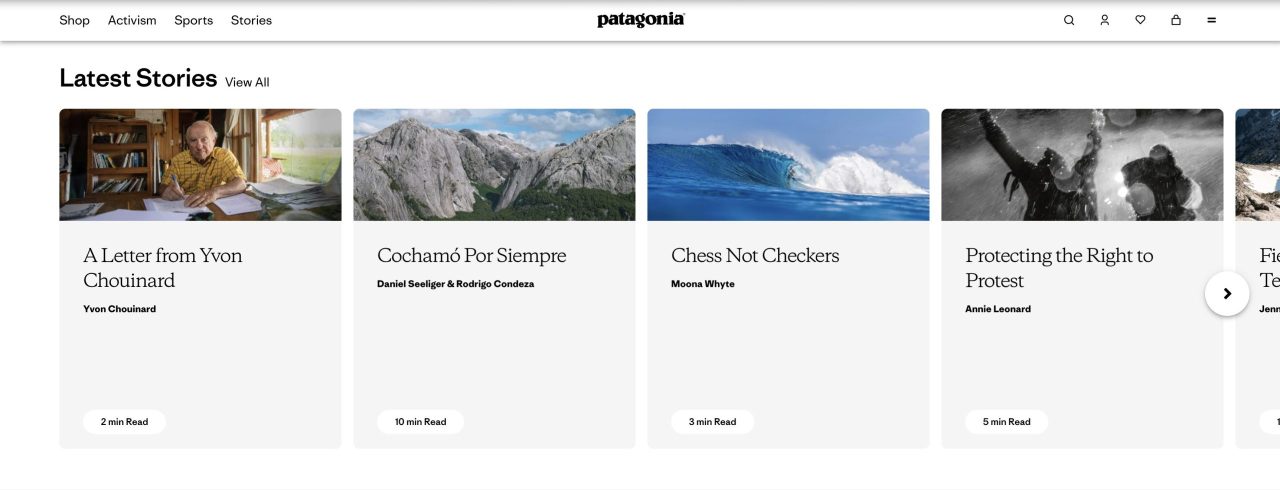
We all hate feeling like we’re being sold to (younger generations more than anyone). So, why do studies show that when asked if advertising influences our own decisions, most of us say no—but when asked if advertising influences other people’s decisions, we overwhelmingly say yes?
Psychology provides a partial answer in that human beings are known for being comfortable with their own over-confidence. If I remember correctly, 80% of drivers think their driving is better than the average. We look for evidence to support our own confirmation bias and protect our status, which means that resisting the truth is all about survival.
Going back to our advertising example, there’s an obvious disconnect. We don’t want to believe we’re influenced by brands, yet we know they shape perceptions. A compelling narrative overrides this resistance, embedding itself in consumer consciousness without feeling forced. It’s not that stories have lost their power—it’s just that those stories now need to be more nuanced and credible.
How can you craft brand stories that resonate?
Better yet, how do brands craft stories that not only resonate but also endure? Storytelling isn’t just a tool—it’s foundational to how humans connect. Seeing patterns within stories triggers our bodies to release oxytocin, the same hormone that explains why hugs are comforting and why shared experiences create bonds.
Storytelling has long been the glue that makes a brand’s message stick. But given today’s fragile trust and relentless scrutiny, the way brands tell their stories needs to evolve.
I’ve spent years shaping brand narratives to resonate, and what I’ve learned is this: Stories alone are not enough. The world is too complex, and audiences are too critical, for one-dimensional narratives. Brands must design stories that are adaptable, truthful, and deeply embedded in the business itself. Otherwise, the risk of losing control of the narrative is simply too great.
Interrogate your own story before telling it
Does your brand narrative hold up under scrutiny? If not, fix the gap before launching it. Leverage any and all tools you have available (both internally and externally) to pressure test your narrative, for stories evolve and control can be lost.
We all remember Dove’s Real Beauty campaign. It was a masterclass in breaking the mold, applauded for how it ignored traditional marketing data and drew insight from honest conversations with its executives’ daughters. But Greenpeace later exposed Unilever, Dove’s parent company, as one of the world’s biggest plastic polluters—contradicting the very empowerment message Dove had championed.
No longer about pushing against an industry built on unattainable aspirations, Dove’s brand narrative started to become a liability, a masterclass in disconnect instead. (I say “started” because stories have a powerful legacy effect, but Dove and Unilever will need to act quickly and coherently to write the brand’s next chapter.)
Involve people well beyond marketing
Your brand’s truth cannot be determined by your marketing team alone. Employees, customers, and other external stakeholders all play a role in shaping its story.
A great example that’s growing increasingly bigger wings is that of cognitive diversity. Marketers need to embrace it if they wish to harness the power of storytelling in a way that truly resonates. This means bringing together people with different skill sets, backgrounds, cultures, genders, ethnicities, and abilities to approach problems from multifarious perspectives.
In an agency or consultancy, this might involve putting anthropologists, designers, data analysts, coders, and filmmakers together to work on a client challenge—not in succession but in tandem. The most powerful brand stories emerge when multiple perspectives shape the narrative from the outset.
Brands risk misalignment when they skip this step. They end up crafting an outward-facing story that doesn’t match their internal reality. And when that disconnect is exposed, the backlash is swift.
Design brand stories that are destined to evolve
The power of storytelling isn’t in question: History is full of brands that built their reputation on great narratives. Think of the classic Renault Nicole and Papa saga, the Nescafe “will they, won’t they” love story, or Guinness’s legendary Surfer ad, which transformed waiting for a pint to settle into a beautifully crafted story. These ads are still synonymous with their products today—proof that storytelling fosters that elusive brand “stickiness”.
The world changes, and so do brand perceptions. Build a story that adapts rather than crumbles under pressure.
The game has changed. A brand’s story can no longer be confined to advertising. It must be baked into the central premise, product or service, online presence, campaigns, brand design, and beyond. The world is more diverse, and media consumption is more fragmented, meaning simple narratives no longer land the way they once did.
Live your brand narrative, day in and out
A brand story isn’t just what’s said, it’s what’s done. If actions across your organization contradict the message, people will notice. Dove was a strong example of this, but it’s not the only one. Need I remind you that a similar thing happened with Starbucks. Its mission to “build communities one cup at a time” clashed with the public’s revelation that its CEO was commuting by private jet rather than relocating to Seattle. The contradiction was too glaring to ignore.
At its core, storytelling is about trust. A compelling story can’t just be clever or emotional—it has to be real. That means ensuring every touchpoint, from leadership decisions to product design, reinforces the message.

A lot is said about Patagonia always telling a believable story, but look at its homepage for a moment. As I’m writing this, the brand’s front page comprises stories of workers’ rights and efforts to protect Chile’s Cochamó Valley from developers and overtourism. Patagonia learned from other brands (e.g., The Body Shop) that business and being a force for good can go hand in hand, so it takes difficult business decisions alongside its brand story. Even restructuring and lay-offs are about sustaining the business, with brand leaders explaining how such decisions are necessary for the brand to continue on its mission.
Moments like these show that Patagonia’s brand story is grounded in the reality of its business, which beautifully brings us back to the core of this discussion: The best brand stories don’t just “stick” in people’s minds. They stand up to scrutiny, invite participation, and, most importantly, consistently ring true.
Cover image: hellokisdottir